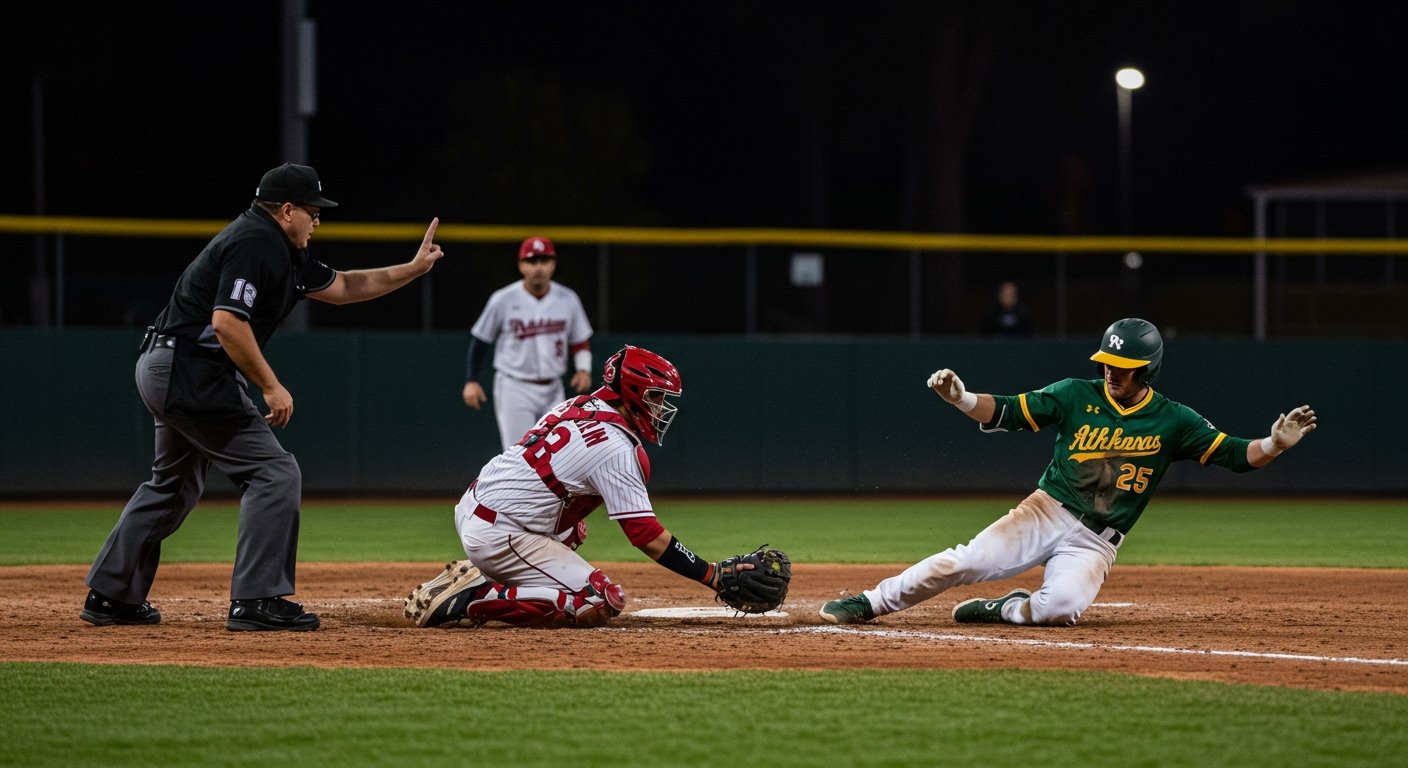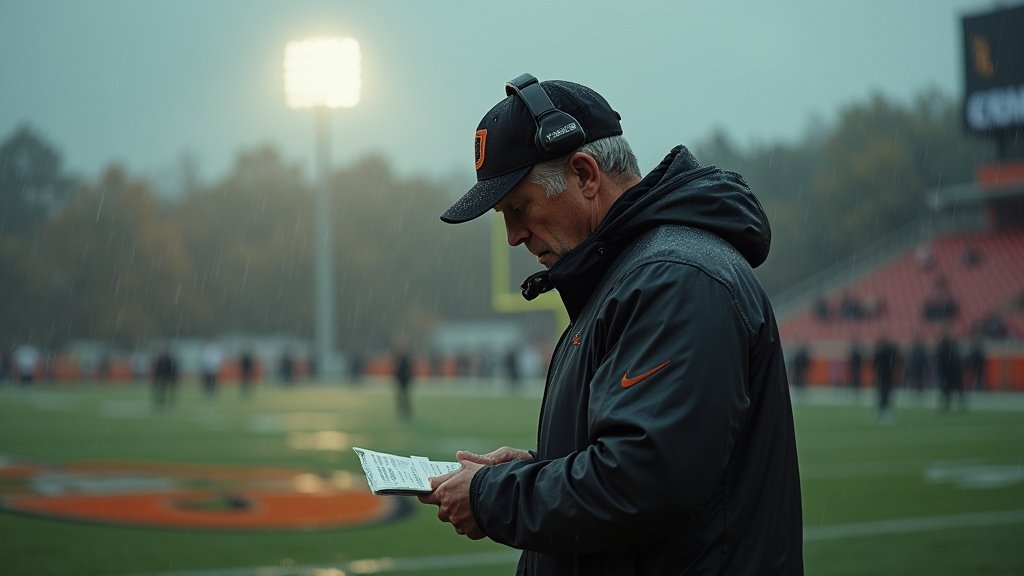An NCAA baseball showdown on June 23, 2025, between the Oregon Ducks and Utah Valley culminated in a dramatic and controversial 6-5 victory for Utah Valley. The decisive moment arrived late in the contest, when a critical play involving Oregon catcher Anson Aroz became the subject of a challenge and subsequent reversal, directly influencing the narrow final score and securing the win for Utah Valley in memorable fashion.
The Decisive Contest
The matchup on June 23, 2025, pitted the University of Oregon’s baseball program, the Ducks, against Utah Valley University. While the final score of 6-5 indicates a tightly contested battle, the game’s lasting narrative became intrinsically linked to events surrounding a single, pivotal play rather than a prolonged back-and-forth scoring affair throughout all nine innings. Such close margins are common in high-level collegiate baseball, where every run, every out, and every official ruling can carry immense weight. This particular game exemplified that dynamic, reaching its climax with a sequence that would ultimately be decided not purely by athletic execution, but by interpretation of the rulebook under the scrutiny of video review.
The Controversial Play
The incident at the heart of the controversy unfolded during a crucial phase of the game, with Oregon catcher Anson Aroz involved in a play at the plate. Details leading directly into the play itself are often dynamic in baseball – runners advancing, throws incoming, fielders attempting to make tags or block the plate. In this specific instance, Aroz was ruled safe by the on-field umpire, a call that naturally drew an immediate reaction from both dugouts. For the Oregon Ducks, it was a potentially game-altering moment in their favor; for Utah Valley, it was a ruling they instantly disputed.
Responding swiftly, the coaching staff for Utah Valley elected to exercise their right to challenge the call. This action paused the game, redirecting attention from the players on the field to the officials, who then initiated the formal review process using available video feeds.
Rule Interpretation Under Scrutiny
The specific grounds for Utah Valley’s challenge were explicitly cited as “malicious contact.” This terminology refers to a distinct rule within baseball designed primarily for player safety, particularly involving collisions or potentially dangerous interactions between a runner and a fielder, like a catcher, attempting to make a play at the plate. The rule aims to prevent unnecessary or overly aggressive contact that could lead to injury.
The review panel, often stationed remotely or in a booth at the venue, is tasked with meticulously examining the play from multiple angles and varying speeds to determine if the contact made by the runner, or the fielder, meets the threshold defined by “malicious contact” or other related rules concerning blocking the plate or runner interference. This process can be time-consuming, as officials strive to make the most accurate ruling possible based on the visual evidence and the precise wording of the rulebook. In the case of the play involving Anson Aroz on June 23, 2025, the review was conducted to assess if the interaction constituted “malicious contact” as challenged by Utah Valley.
Overturn and Impact on the Score
Following a period of review, the decision from the officials was relayed back to the field: the initial call of “safe” was overturned. This reversal fundamentally changed the outcome of the play. Instead of Aroz being safe, the ruling determined that the contact or sequence of events, judged against the “malicious contact” standard cited by Utah Valley, warranted the opposite outcome. This typically results in the runner being called out, or the play being nullified in a manner detrimental to the offensive team’s advance.
The impact of this overturned call on the tight 6-5 score was immediate and, as it turned out, decisive. By negating the runner’s presence or potential run, the controversial ruling extinguished Oregon’s scoring opportunity at that critical juncture. This play, subjected to challenge and review, proved to be the final significant event impacting the scoring, preserving Utah Valley’s slim lead and paving the way for them to close out the game. The final score stood at 6-5 in favor of Utah Valley, a victory secured, or at least finalized, in the shadow of the debated ruling.
Aftermath and Discussion
Games decided by controversial calls, particularly those involving subjective interpretation of rules like “malicious contact” and utilizing video review, often become significant talking points. The June 23, 2025, contest between the Oregon Ducks and Utah Valley will undoubtedly be remembered for this singular play and its impact on the 6-5 outcome.
For the Oregon Ducks and catcher Anson Aroz, the overturned call represents a frustrating conclusion to a close game, where a play initially ruled in their favor was ultimately taken away after review. It highlights the fine margins and the unpredictable nature that technology and expanded replay have introduced into sports. For Utah Valley, the successful challenge and subsequent overturned call provided the crucial edge needed to clinch the victory. It underscores the strategic importance of utilizing the challenge system effectively and the potential for specific rule interpretations to alter results dramatically.
The debate surrounding calls like this centers on the balance between ensuring player safety, the letter of the law, and the spirit of competition. While video review aims for accuracy, the application of terms like “malicious contact” can still leave room for interpretation and disagreement. Regardless of individual perspectives on the correctness of the final ruling, the fact remains that a controversial catcher interference call, challenged by Utah Valley on grounds of “malicious contact” and involving Oregon’s Anson Aroz, was overturned, directly contributing to Utah Valley’s hard-fought 6-5 victory over the Oregon Ducks on June 23, 2025. The game stands as a testament to how moments of controversy can become intertwined with the final statistics of a sporting event.




